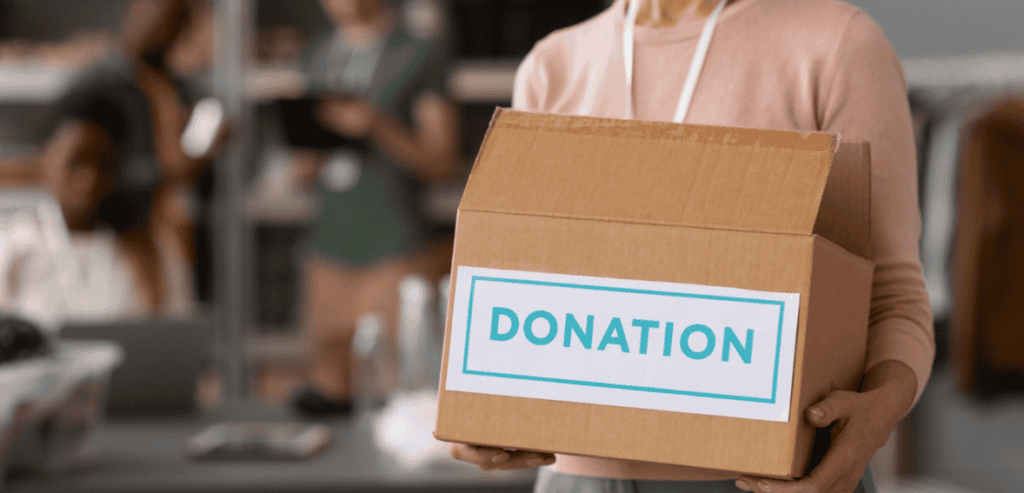
By Zackary Rhodes October 16, 2025
Fundraising has always been about connecting with people, telling stories and asking for money. In the past it was almost all offline, events, mailers and in person asks. With the growth of the internet and digital platforms online giving became a major force, speed, reach and efficiency. Today the most successful campaigns don’t choose between offline and online; they blend them. Hybrid fundraising tools have emerged as the backbone of modern philanthropy, allowing organizations to integrate in person donation solutions with seamless online and offline donation integration.
This is how people live their lives. Supporters no longer separate their digital and physical interactions. They might hear about a cause at an event, scan a QR code to give on the spot and later follow updates on social media. Platforms that merge these experiences allow nonprofits, schools and community organizations to stay connected with donors across multiple touchpoints. By having a unified fundraising strategy organizations raise more and build deeper, more sustainable relationships with their supporters.
Why Hybrid Fundraising Tools Matter Today
The fundraising landscape has changed so much in the last 10 years. Donors want convenience, security and flexibility no matter how they give. Hybrid fundraising tools give you that by allowing you to manage both digital and physical campaigns in one system. So a donor who gives at a gala through an in-person donation solution can later give online through the same platform without confusion. For nonprofits, this means less administrative complexity and stronger donor records as all gifts are connected.
The pandemic accelerated the need for digital fundraising but as in-person events returned, organizations found the power of combining methods. A walkathon for example might have live registration booths and mobile apps where participants collect pledges digitally. This combines more people and makes sure no one is left out. Online and offline donation integration is how donors want to give; on their terms. By using hybrid systems you keep fundraising relevant and future proof.
The Role of In-Person Donation Solutions
Even with digital giving growing, in-person donation solutions are still crucial. They create immediacy, emotional connection and community. At live events when people are moved by a speech or presentation, having easy ways to give on-site maximizes giving. Donation kiosks, mobile card readers and QR codes are modern tools that allow giving in seconds. These solutions allow nonprofits to capture the moment and convert inspiration into action.
Platforms that specialize in online and offline donation integration now offer tools that bridge physical giving with digital systems. A donor who swipes a card at an event has their gift tracked alongside digital pledges so consistency in reporting. Hybrid fundraising tools ensure these experiences are not siloed but part of the overall donor journey. By making in-person giving easy and connecting it to digital records nonprofits maximize efficiency and donor satisfaction and don’t miss opportunities.
Online Platforms That Power Integration
Online giving platforms have gotten more sophisticated and many now integrate with offline tools. These platforms allow you to design campaigns that work across channels. A donor who gets a text-to-give prompt at an event can use the same platform to set up a recurring online gift later. Social media integrations allow you to amplify campaigns and see all donations in one place.
One of the biggest benefits of online and offline integration is data consistency. Hybrid fundraising tools eliminate the need for separate systems for online and offline gifts. Everything flows into one dashboard so reporting and analysis is easier. You can see donor behavior more clearly, measure campaign effectiveness and personalize future outreach. For the donor, it’s a smoother, more connected giving experience where their gift is recognized across every channel.
Donor Expectations in the Hybrid Era
Today’s donors want options, transparency and convenience. They don’t think in terms of separate channels; they want a cause to be wherever they are. Whether they’re attending a gala dinner, participating in a community run or seeing a campaign online, they want to give quickly and securely. In-person donation solutions should feel as modern and seamless as digital ones, while digital campaigns should provide the same personal connection often associated with offline giving.
Hybrid fundraising tools are designed to meet these expectations. They allow donors to move between platforms seamlessly while maintaining trust. A donor who signs up for monthly giving online should be able to update their preferences at an in-person event with no fuss. Online and offline donation integration means donors feel seen and valued no matter how they engage. By meeting expectations across both worlds, you build stronger relationships and long term loyalty.

The Technology Behind Hybrid Fundraising Tools
The rise of hybrid fundraising tools is powered by advancements in payment processing, data management, and mobile technology. Cloud-based systems allow nonprofits to synchronize contributions in real time, whether they come from a card reader at an event or a recurring donation made online. Mobile apps and QR codes simplify in-person giving, while integrations with social media and email campaigns amplify digital reach.
These technologies ensure online and offline donation integration happens without extra administrative effort. In-person donation solutions like tablets or kiosks feed into the same backend systems as digital forms, providing a unified donor database. This technology also strengthens security, using encryption and compliance standards to protect sensitive information. The bakery tech future may showcase innovation for commerce, but in the nonprofit world, similar advances are transforming how donations are collected and managed. For organizations, the challenge is no longer about whether to adopt these tools but how to optimize them for the best results.
Challenges in Combining Offline and Online Donations
While hybrid fundraising tools are powerful, they are not without challenges. One common issue is cost, as implementing advanced platforms requires investment in both hardware and software. Smaller organizations may struggle with adopting in-person donation solutions like kiosks or card readers due to budget constraints. Training staff and volunteers to use the technology effectively is another hurdle, as smooth donor experiences depend on confident execution.
Data consistency is another challenge. Online and offline donation integration must be handled carefully to avoid duplicate records or reporting errors. Without proper setup, donors may feel frustrated if their contributions are not acknowledged correctly. To address these issues, organizations must choose platforms that prioritize ease of use, strong support, and scalable solutions. Hybrid fundraising tools are only effective when they are implemented thoughtfully, with attention given to both the donor experience and the internal processes of the nonprofit.
The Future of Fundraising: A Unified Approach
Looking ahead, the future of fundraising is not about choosing digital or physical; it is about unifying them. Donors will expect even more seamless transitions between giving methods, and organizations will need to keep pace. Hybrid fundraising tools will continue to evolve, offering smarter analytics, personalization features, and tighter integration with social platforms. In-person donation solutions will likely become more mobile-driven, with contactless and biometric options becoming standard.
The long-term success of nonprofits will depend on their ability to embrace online and offline donation integration fully. This unified approach ensures that no matter how a donor chooses to give, the process is smooth, secure, and appreciated. By learning from global trends in payments and technology, nonprofits can build stronger, more adaptable fundraising strategies. The future will belong to organizations that see hybrid fundraising not as a temporary solution but as the foundation for building deeper, lasting donor relationships.
How Hybrid Tools Enhance Donor Engagement
Donor engagement is no longer limited to thank-you notes and follow-up calls. Hybrid fundraising tools make it possible to keep donors connected at every stage of their journey. A supporter who attends a charity dinner can later receive updates through a digital portal that tracks their contributions, shares impact stories, and encourages continued involvement. By combining in-person donation solutions with online platforms, nonprofits create multiple touchpoints that reinforce commitment. This consistent engagement strengthens loyalty and helps transform one-time givers into long-term supporters.
The beauty of online and offline donation integration is that it allows personalization at scale. Data collected from both channels helps organizations understand donor preferences and behavior, which in turn informs tailored communication. A donor who frequently gives at events might be invited to join a monthly program online, while digital givers may be encouraged to attend in-person volunteer opportunities. The blend of offline and online tools ensures every supporter feels recognized in a way that resonates with their giving style.

Case Studies: Events That Showcase Hybrid Success
Walkathons and marathons, for instance, often combine traditional pledge collection with digital apps that allow participants to share progress and collect donations online. Schools hosting auctions now offer QR codes and mobile bidding systems that allow parents to contribute from anywhere, whether seated at the event or following remotely. These in-person donation solutions extend the reach of fundraising far beyond physical boundaries.
Online and offline donation integration also shines during emergency relief campaigns. Nonprofits can collect funds at community centers using kiosks while simultaneously running digital appeals across social media. This ensures they capture both spontaneous generosity and planned contributions. Such events show that hybrid fundraising is not a passing trend but a proven strategy. By learning from successful examples, organizations can better understand how to design experiences that maximize participation and donor satisfaction.
Training and Support for Staff and Volunteers
The best technology is only as good as the people using it. For hybrid fundraising tools to deliver results, staff and volunteers must feel confident in operating them. Training programs that cover everything from setting up donation kiosks to navigating digital dashboards are essential. Volunteers working at in-person events should be prepared to guide donors through mobile payment processes, ensuring that technology enhances rather than complicates the giving experience.
Ongoing support is just as important as initial training. Platforms offering responsive customer service help organizations troubleshoot issues quickly during high-pressure events. Online and offline donation integration requires careful coordination, and support systems ensure smooth execution. By investing in staff readiness, nonprofits not only maximize the benefits of in-person donation solutions but also build trust with donors. Confidence and competence among frontline teams reflect directly on the professionalism of the organization and the quality of the donor experience.
Building Trust Through Transparency and Reporting
Transparency has always been a cornerstone of successful fundraising, and hybrid systems make it easier to deliver. By combining offline and online records into one system, nonprofits can provide donors with accurate, timely reports that show exactly how funds were collected and used. Hybrid fundraising tools make it simple to generate detailed statements that reassure supporters their contributions are being managed responsibly.
Online and offline donation integration also strengthens accountability. A donor who gives at an event can later log into a digital portal to see their full contribution history, track progress toward goals, and even access receipts for tax purposes. In-person donation solutions that sync with digital systems create an unbroken chain of information, eliminating doubts about transparency. This level of clarity builds confidence among donors and encourages them to give more frequently. By prioritizing openness, nonprofits create a cycle of trust that sustains long-term success.
Conclusion
Fundraising has entered a new era, where physical and digital methods no longer compete but complement one another. Hybrid fundraising tools are at the heart of this transformation, offering nonprofits the ability to combine in-person donation solutions with robust digital platforms. By prioritizing online and offline donation integration, organizations simplify operations, strengthen relationships, and maximize results. For donors, this approach delivers the convenience and flexibility they demand. For nonprofits, it ensures sustainability and growth.
The key lies in embracing these tools with intention, ensuring they are accessible, secure, and engaging across all channels. As fundraising continues to evolve, blending offline and online experiences will remain the smartest way to connect with supporters. By uniting tradition with innovation, nonprofits can build campaigns that not only raise money but also inspire long-term loyalty and impact.